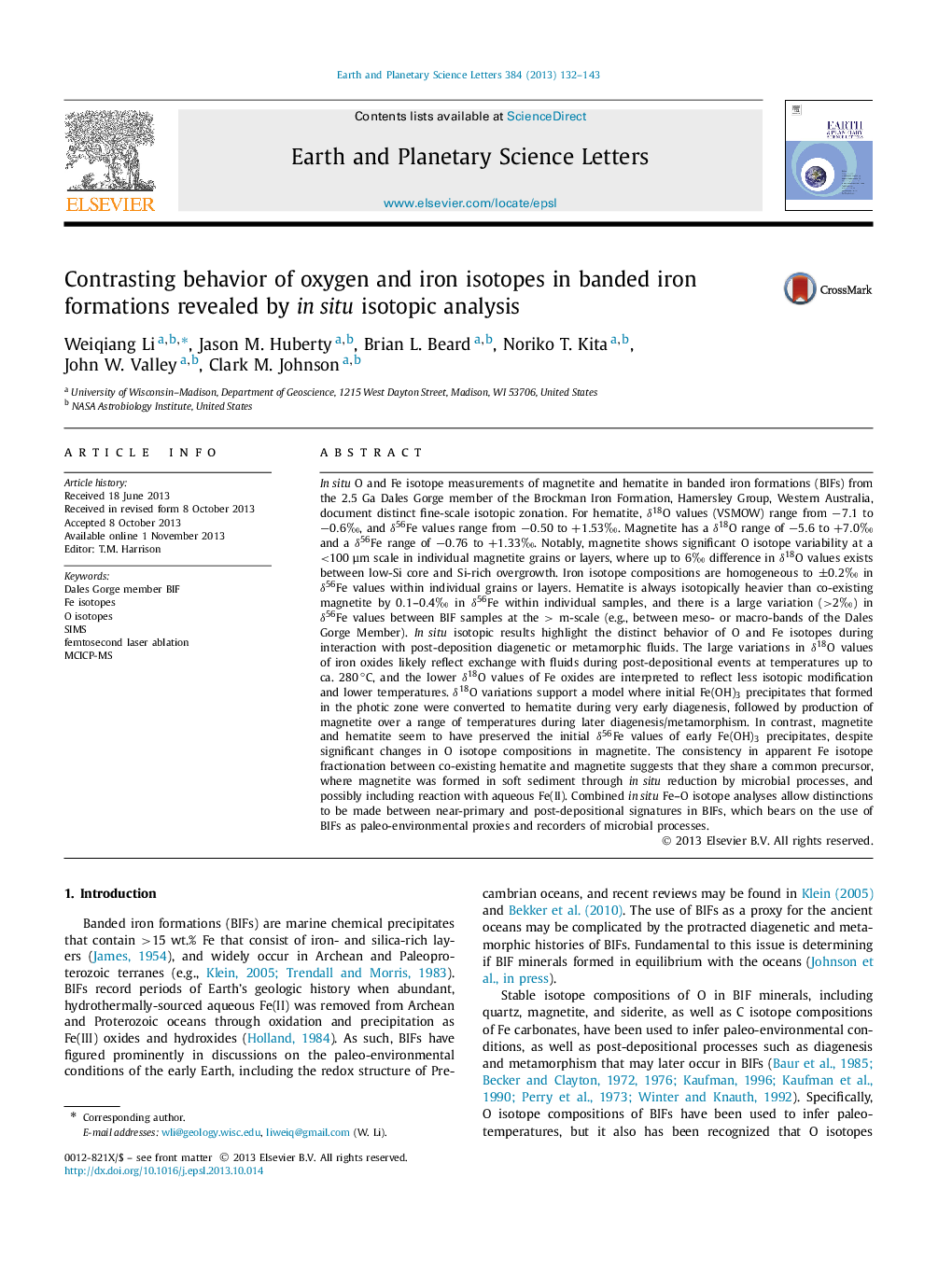| کد مقاله | کد نشریه | سال انتشار | مقاله انگلیسی | نسخه تمام متن |
|---|---|---|---|---|
| 6429934 | 1634772 | 2013 | 12 صفحه PDF | دانلود رایگان |
- The first combined in situ study of O and Fe isotopes on BIF Fe-oxides.
- Large variations in both O and Fe isotope compositions revealed by the in situ analyses.
- Decoupling of O isotope variation and Fe isotope variation.
- O and Fe isotopes respond differently to BIF precipitation and post-depositional processes.
- Combined in situ Fe-O isotope analyses are powerful tools in BIF study.
In situ O and Fe isotope measurements of magnetite and hematite in banded iron formations (BIFs) from the 2.5 Ga Dales Gorge member of the Brockman Iron Formation, Hamersley Group, Western Australia, document distinct fine-scale isotopic zonation. For hematite, δO18 values (VSMOW) range from â7.1 to â0.6â°, and δFe56 values range from â0.50 to +1.53â°. Magnetite has a δO18 range of â5.6 to +7.0â° and a δFe56 range of â0.76 to +1.33â°. Notably, magnetite shows significant O isotope variability at a <100 μm scale in individual magnetite grains or layers, where up to 6â° difference in δO18 values exists between low-Si core and Si-rich overgrowth. Iron isotope compositions are homogeneous to ±0.2â° in δFe56 values within individual grains or layers. Hematite is always isotopically heavier than co-existing magnetite by 0.1-0.4â° in δFe56 within individual samples, and there is a large variation (>2â°) in δFe56 values between BIF samples at the > m-scale (e.g., between meso- or macro-bands of the Dales Gorge Member). In situ isotopic results highlight the distinct behavior of O and Fe isotopes during interaction with post-deposition diagenetic or metamorphic fluids. The large variations in δO18 values of iron oxides likely reflect exchange with fluids during post-depositional events at temperatures up to ca. 280â°C, and the lower δO18 values of Fe oxides are interpreted to reflect less isotopic modification and lower temperatures. δO18 variations support a model where initial Fe(OH)3 precipitates that formed in the photic zone were converted to hematite during very early diagenesis, followed by production of magnetite over a range of temperatures during later diagenesis/metamorphism. In contrast, magnetite and hematite seem to have preserved the initial δFe56 values of early Fe(OH)3 precipitates, despite significant changes in O isotope compositions in magnetite. The consistency in apparent Fe isotope fractionation between co-existing hematite and magnetite suggests that they share a common precursor, where magnetite was formed in soft sediment through in situ reduction by microbial processes, and possibly including reaction with aqueous Fe(II). Combined in situ Fe-O isotope analyses allow distinctions to be made between near-primary and post-depositional signatures in BIFs, which bears on the use of BIFs as paleo-environmental proxies and recorders of microbial processes.
Journal: Earth and Planetary Science Letters - Volume 384, 15 December 2013, Pages 132-143
